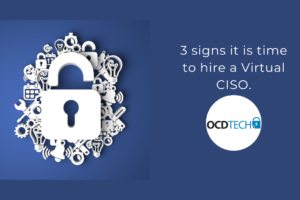For many founders, especially those without a coding background, platforms like Wappler.io have become indispensable tools for bringing apps to life. With Wappler, you get a powerful no-code and low-code development platform that simplifies app creation, allowing you to focus on delivering features and user experiences without dealing with the complexities of traditional coding. But as impressive as Wappler is for app-building, there’s a critical aspect that often goes overlooked: SOC2 compliance.
If your app will manage or store sensitive customer data, having robust SOC2 controls in place is essential. While Wappler excels in giving you the tools to build functional, feature-rich apps, it doesn’t automatically cover the organizational controls and security measures required for SOC2 compliance. This is a crucial consideration for founders who are scaling their businesses and working with B2B clients or regulated industries like finance or healthcare.
Understanding SOC2 and Why It’s Crucial for Your App
SOC2 compliance ensures that your organization is handling customer data securely. Developed by the American Institute of Certified Public Accountants (AICPA), SOC2 focuses on five core “trust service principles”: security, availability, processing integrity, confidentiality, and privacy.
For founders launching apps, particularly those in data-sensitive industries, SOC2 compliance is often a deal-breaker. Clients and investors need to know that your app and the infrastructure surrounding it are secure. Without SOC2 compliance, you risk losing out on important contracts or leaving yourself vulnerable to data breaches and regulatory penalties.
Here’s why SOC2 matters for your business:
– Building Trust: SOC2 certification gives your customers confidence that their data is protected and that your organization takes security seriously.
– Legal and Regulatory Requirements: Many industries, such as healthcare and finance, require SOC2 compliance as part of their vendor management processes.
– Minimizing Risk: SOC2 forces you to develop processes and systems that help prevent data breaches, downtime, and other operational risks.
– Business Growth: Investors and partners will expect SOC2 compliance as your app gains traction and handles more sensitive information.
Wappler.io: A Powerful Tool for Building, But Not Compliance
Wappler.io is highly regarded for its robust, flexible, and user-friendly approach to app development. It empowers you to design, build, and deploy fully functional applications without writing extensive code. Whether you’re creating dynamic web apps, mobile apps, or complex backend systems, Wappler’s drag-and-drop interface makes it simple to achieve professional results.
Here are some of Wappler’s standout features:
– Full-stack Development: Wappler supports frontend and backend development, enabling you to create complete applications from start to finish.
– Customizable and Flexible: With Wappler, you have full control over the code, allowing you to fine-tune your app’s functionality as you grow.
– Database Integration: The platform allows seamless integration with various databases, making data management straightforward.
– Responsive Design: Wappler ensures that your app looks and works great on any device, from desktops to mobile phones.
Despite these powerful features, Wappler focuses on the technical aspects of app development. SOC2 compliance, on the other hand, goes beyond the platform and involves organizational security measures that Wappler doesn’t directly address. So while you’re building the next big app on Wappler, there’s an important compliance gap you need to fill.
What Wappler.io Doesn’t Cover: The SOC2 Compliance Gap
Achieving SOC2 compliance requires more than just a secure app—it demands organization-wide practices, policies, and controls. Here are a few critical areas where Wappler.io falls short when it comes to compliance:
- Data Governance and Policies: SOC2 compliance requires written and enforced policies around data handling, retention, and incident response. Wappler doesn’t offer built-in tools to help you manage these.
- Employee Training and Awareness: One of SOC2’s key areas of focus is ensuring that employees understand security best practices. Training and awareness initiatives are essential but aren’t part of Wappler’s platform.
- Incident Response and Monitoring: While Wappler allows you to create secure apps, SOC2 expects you to have a formal incident response plan in place, as well as monitoring systems to detect and respond to potential breaches.
- Access Controls: SOC2 compliance demands strict access controls to ensure that only authorized individuals can access sensitive data. While Wappler supports role-based access within your app, it doesn’t manage who in your organization can access the app’s infrastructure and related systems.
- Third-Party Risk Management: Your app may rely on third-party vendors (e.g., cloud providers, payment processors) for certain services. SOC2 requires that you manage the security risks posed by these vendors, which goes beyond Wappler’s functionality.
Filling the SOC2 Gap While Using Wappler.io
To achieve SOC2 compliance while leveraging the power of Wappler.io, you need to take extra steps to implement security controls and policies. Here’s how to bridge the gap:
1. Implement Internal Policies: Create detailed policies that outline how your team will handle data security, incident response, and vendor management. These policies will be critical when you go through a SOC2 audit.
2. Use External Tools: Add tools for logging, monitoring, and encryption to ensure full visibility into your app’s security. For example, you may use cloud security platforms to monitor access and detect potential threats.
3. Regular Audits and Assessments: SOC2 compliance isn’t a one-time process. Regular audits are required to ensure that you maintain security standards as your app grows and evolves. Consider partnering with a security consultant to conduct these assessments.
4. Train Your Team: Ensure that everyone in your organization understands their role in maintaining security. Employee training is crucial for SOC2 compliance, especially as you scale.
5. Vendor Risk Management: Assess the security posture of any third-party services or vendors your app uses. Ensure they meet the necessary security standards and document their compliance.




